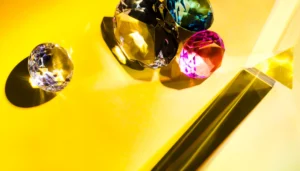Gemstone photography is an art form that involves capturing only the best qualities of gemstones and metals. This branch of product photography requires a certain level of skill, patience, and creativity, as photographing gemstones and precious metals can be challenging due to their reflective surfaces, intricate textures, and vibrant colors.
To take stunning photos of gems and precious metals, you need to have at least a basic understanding of the gemstone itself, backgrounds, and post-processing software. You should also be familiar with various equipment such as macro lenses, tripods, diffusers, reflectors, and backgrounds. The good news is that you’ll learn all about it today!
Whether you are a professional photographer looking to expand your portfolio, or even a jeweler, gemstone photography can enhance your work. Dive deeper into our little-known tips and tricks that are sure to enhance your images.
Importance of gems photography
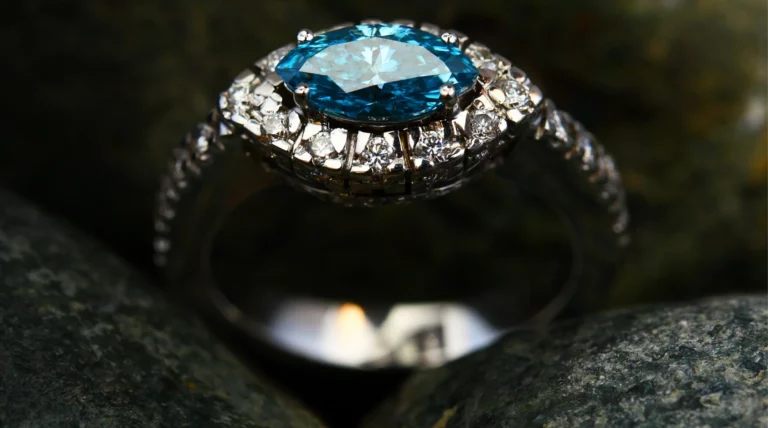
Gemstones come in different colors, shapes, and sizes that can help you immensely when displayed in the best possible light. It is therefore crucial to have gemstone photography to showcase the true value and beauty of these gems to potential buyers and enthusiasts worldwide.
In addition, gemstone photography plays a crucial role in jewelry design and advertising. Jewelry designers often use high-quality images to present their creations to potential customers. The photos help them highlight the intricate details of the jewelry piece as well as its unique features such as cut, color, clarity, carat weight, etc. In advertising campaigns for jewelry stores or online marketplaces like Amazon, high-quality images give buyers an accurate idea of what they are buying.
5 battle-proven tips
Now that you understand the importance of gemstone imagery, as well as who is better off learning more about it, it’s time we start the actual learning. Without further ado, let’s get to the bottom of these useful gemstone photography tips.
Understand the characteristics of gemstone
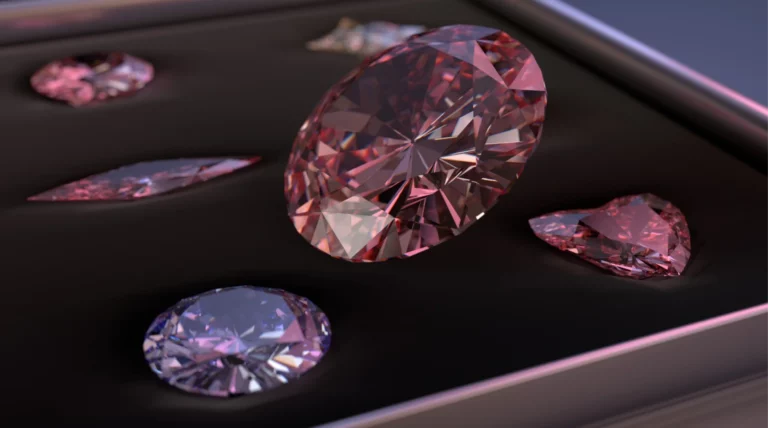
Gemstone jewelry product photography is a popular hobby among photographers and jewelry lovers alike. Whether you want to capture the beauty of a diamond, emerald or ruby, knowing the different types of gemstones is crucial to creating stunning images. Gemstones can be classified according to their chemical composition, physical properties, and optical characteristics. Knowing these classifications will help you choose the best lighting, camera settings, and processing techniques for each type of gemstone.
One way to classify gemstones is based on their mineral composition. Diamonds, for example, are made of carbon, while emeralds are made of beryl with chromium or vanadium impurities. Another classification system looks at physical properties such as hardness and cleavage. Diamonds are the hardest mineral on earth with perfect cleavage, while emeralds have poor cleavage and are easily scratched.
Equip yourself properly
Capturing the beauty and complexity of gems requires the right equipment, including a high-quality camera, lens, and tripod. The selection of the top tools for gemstone photography requires considerations such as image quality, clarity, resolution, hue consistency, and precision.
First, you need a camera with excellent image quality. Look for cameras with a high megapixel count that can capture fine details in your shots. A DSLR camera is ideal because it allows you to make adjustments such as aperture, shutter speed and ISO to get the perfect exposure. Part of having an exceptional camera is choosing the right lens. For this, we recommend a macro lens with a large aperture from reliable suppliers.
You’ll also need a tripod to stabilize your high-end camera. Among other benefits, a tripod helps you maintain consistency throughout your shots and opens up a whole new range of angles.
Prepare a contrasting background for photographing gemstones
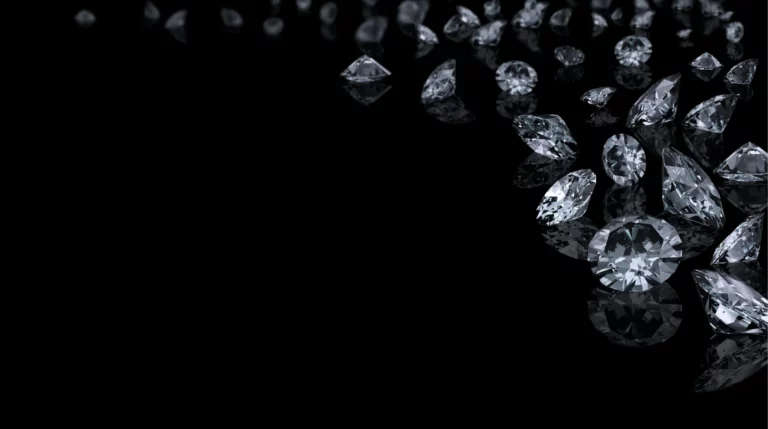
To create stunning gemstone photos, the background is one of the most important aspects to consider. A contrasting background can make your gems stand out and appear more vibrant. Here are some tips on how to prepare a high contrast background for your gemstone photography.
First, pick a color palette that matches your gemstones. You can use colors like black, white, or gray to contrast with colorful gemstones like emeralds or rubies. Earth tones like brown or beige should be used for the background of pastel colored stones. Second, you should experiment with different textures and shapes for your background. You can use fabrics like velvet or silk to add depth and texture to your photos. Alternatively, you can use natural elements like rocks or sand that give an organic feel.
Light your gemstone accordingly
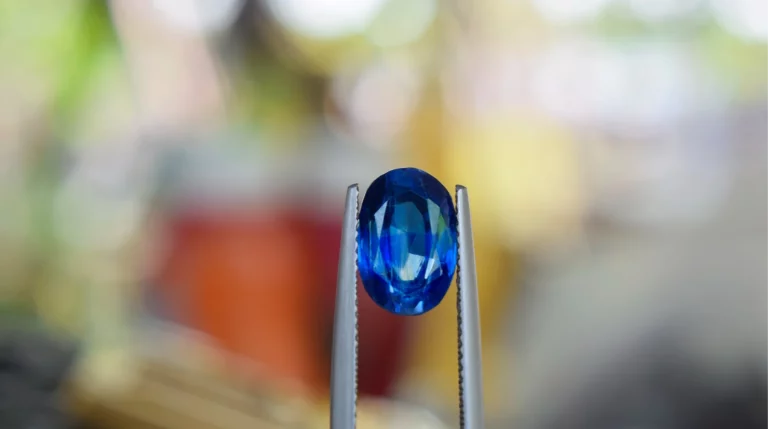
Gemstone photography is a niche field that requires a high level of photographic craftsmanship. One of the most important aspects of taking stunning gemstone photos is the lighting used during the shoot. The appropriate lighting can make the difference between a photograph that conveys the essence of a gemstone and one that fails to convey its true beauty. Also, here you can get full guide about how to photograph shiny objects without reflection.
The first rule of lighting for gemstone photography is to avoid direct sunlight or harsh artificial light sources. These types of light can cause unwanted shadows, reflections, or glare on your subject. Instead, opt for diffused natural light or studio lights with light boxes or diffusers to illuminate your subject evenly and without unwanted distortion.
Take your images through post-production
In gemstone photography, post-processing is essential to bring out the beauty and complexity of these gems. While there are numerous photo editing programs available, not all are suitable for gemstone photography.
One such software is Adobe Photoshop. This industry-standard program offers a wealth of features to help you get the most out of your gemstone images. Photoshop lets you adjust colors, contrast, and brightness to bring out every facet of your gemstones. The software also has powerful tools to remove blemishes or imperfections from your photos.
However, if you need to shoot multiple products or edit images, we recommend batch-processing software like Capture One Pro and Adobe Lightroom. This software is designed specifically for professional photographers and offers advanced color management features that enhance the vibrancy and depth of your gems’ hues. Learn more about how to use post-processing tools in one of our latest articles.
Conclusion
The primary purpose of photographing gemstones and precious metals is to showcase their unique beauty, texture, and color. A well-captured photo can significantly influence a customer’s decision to purchase a particular jewelry piece or gemstone.
Photographing marketing-worthy gemstones and precious metals requires technical know-how and patience. It takes expertise in lighting, angles, and cameras to capture the true essence of these precious stones. If you find yourself in a bit of a time and money crisis, then CGI product photography might be your jam! With all the work being done in remote settings, you can enjoy the look of a well-crafted gemstone image faster and cheaper than ever before. For more information, feel free to contact us anytime – we can’t wait to meet you!
FAQ
What equipment do I need to photograph gemstones and precious metals?
To capture the essence of your gemstone and precious metals in your product photographs, you need equipment that never fails, such as a DSLR camera, a macro lens, and a sturdy tripod.
How can I enhance the colors and shine of gemstones and precious metals in post-processing?
You can easily enhance the colors and shine of your gemstones and precious metals with post-processing tools such as Adobe Photoshop, Adobe Lightroom, and Capture One. Read this article for more in-depth information.
What are some techniques for capturing the intricate details of gemstones and precious metals in photographs?
The techniques we recommend for capturing the intricate details of gemstones and precious metals in your photographs are using the proper light, with no harsh tones, and introducing a high-end contrasting background.

